Standing around with a few random indie bookseller types at MoCCA recently, one of them stated “Barnes & Noble will be gone in a year!” It’s a popular opinion but not a popular result – B&N may be the last of the big box bookchains, but when Borders went under it traumatized comics, manga and everyone else who relies on print.
I hear an opposite reaction from many in the traditional publishing world – B&N is literally too important to fail, and the entire industry wants it to stay around. And the company keeps tightening its belt to stay around. Jim Milliot covers the B&N beat at Publishers Weekly, and recently reported on a huge round of layoffs that would save $40 million. that resulted from a lackluster holiday season. An executive from Target/GNC has also been brought in to manage the store’s merchandise areas. In an earlier report, Milliot laid out a $10 million loss in fiscal 2018.
Total sales at Barnes & Noble dropped 6.6% in the quarter ended July 29, compared to the same period a year ago. Sales in the quarter, the first of fiscal 2018, were $853.3 million, down from $913.9 million in the quarter ended July 30, 2016.
Despite the decline, B&N cut its net loss to $10.8 million, down from $14.4 million a year ago. B&N CEO Demos Parneros attributed the lower loss to continued reductions in expenses. The biggest improvement on the bottom line came in B&N’s Nook division, where the operating loss was cut to $2.7 million from $14.0 million in last year’s first quarter. Sales in the Nook unit, however, fell to $29.5 million, from $41.0 million a year ago.
Sales in B&N’s core retail stores declined 5.9% in the quarter, to $830 million. Comparable store sales decreased 4.9% as, B&N said, “declines in non-book categories outpaced improved book trends during the quarter.” Specifically, B&N said book sales fell 2.8% in the quarter, while non-book categories–which had been a good performer–fell by about 8%. Sales through BN.com also fell in the quarter. The division’s operating loss increased to $12.5 million from $7.4 million in last year’s first quarter.
B&N still makes a lot of money. It just needs to find a way to balance its budgets.
Today’s New York Times includes an editorial called Save Barnes & Noble! by David Leonhardt, whose credentials on twitter are that he is a NYT op-ed writer. Leonhardt blames Amazon and lax regulation for B&N’s woes:
The book business is looking like a case study. Amazon is taking over, yet has never run into antitrust scrutiny. It has reduced prices, after all. It sells many e-books for $9.99 and hardcover best sellers at a big discount. So what’s the problem?
Plenty. Amazon has been happy to lose money on books to build a loyal customer base, to which it can then sell everything else. “Amazon isn’t primarily concerned about books these days,” Oren Teicher, who runs an association of independent bookstores, told me. “They are far more focused on getting consumers into their ecosystem so they can sell them every other product under the sun.”
It’s nice that Leonhardt is picking on predatory big business, but he glosses over B&N’s own internal struggles and failure to adapt. But to be honest, B&N is the LAST thing you should use as an example of disruption.
Bookstores have survived disruption longer than anything – despite Amazon’s original, core business being books. Think about that. Amazon has been selling books at discounts longer than anything and yet bookstores are still here and growing. The growth comes from indie stores clawing away at rock surfaces as freeezing gales buffet them, but they are still here while record stores, video stores, toy stores and newsstands were blown away in the storm.
Indeed, Amazon is opening its own brick and mortar stores, (for nefarious, data gathering purposes it’s suspected) and they’re like mini B&Ns with books and coffee in a placid environment. Out of all the products they carry, why did Amazon pick BOOKS to showcase? They could have showcased anything.
Bookstores may still go down, but they lasted longer than anything. I’ll leave the whys to other pundits to discuss.
So to answer the question posed at the top of this article, is B&N going to fold Answer: I don’t know! I sure hope not because it would be a disaster for a lot of people. But its demise is not a foregone conclusion either.


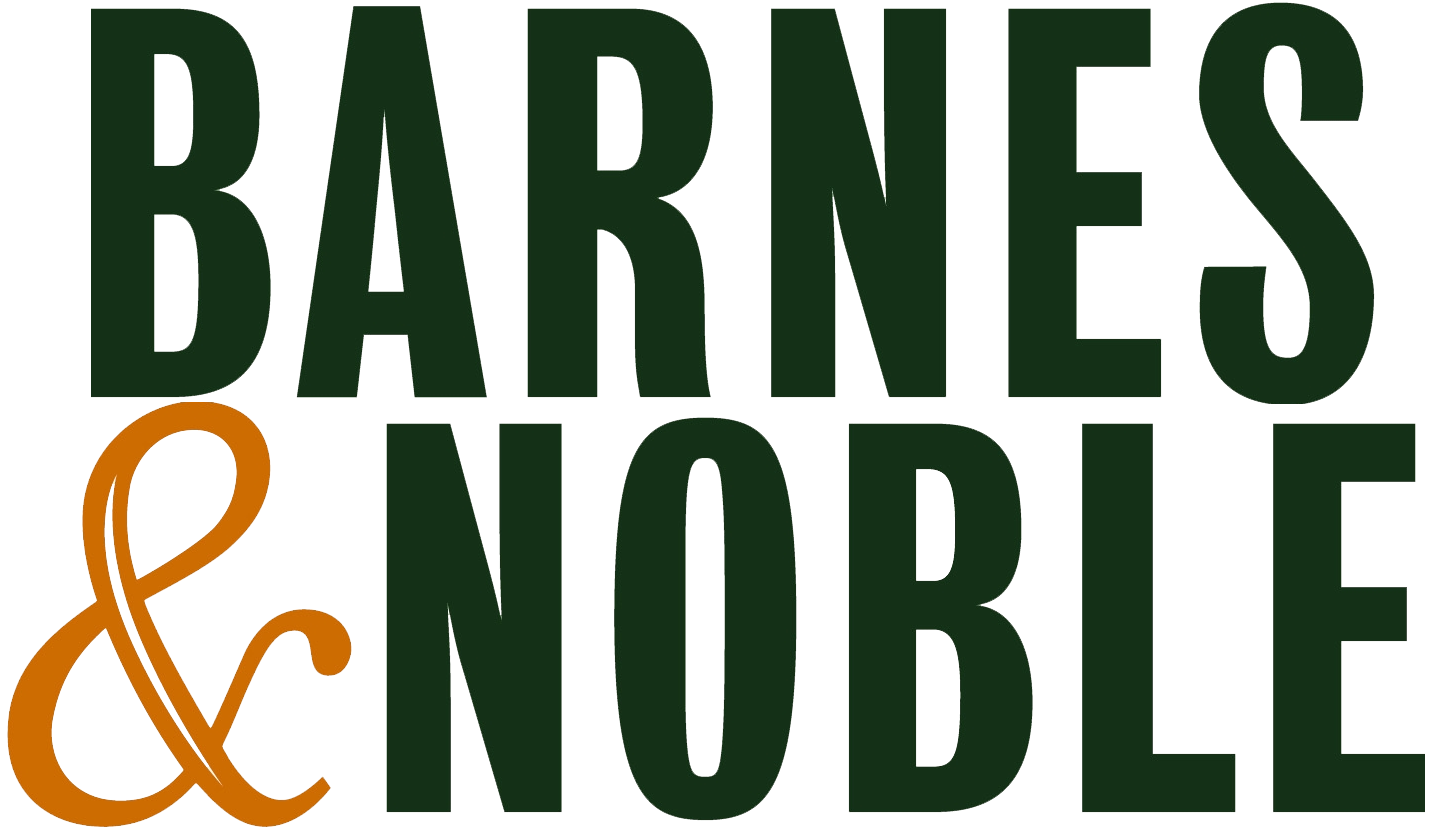
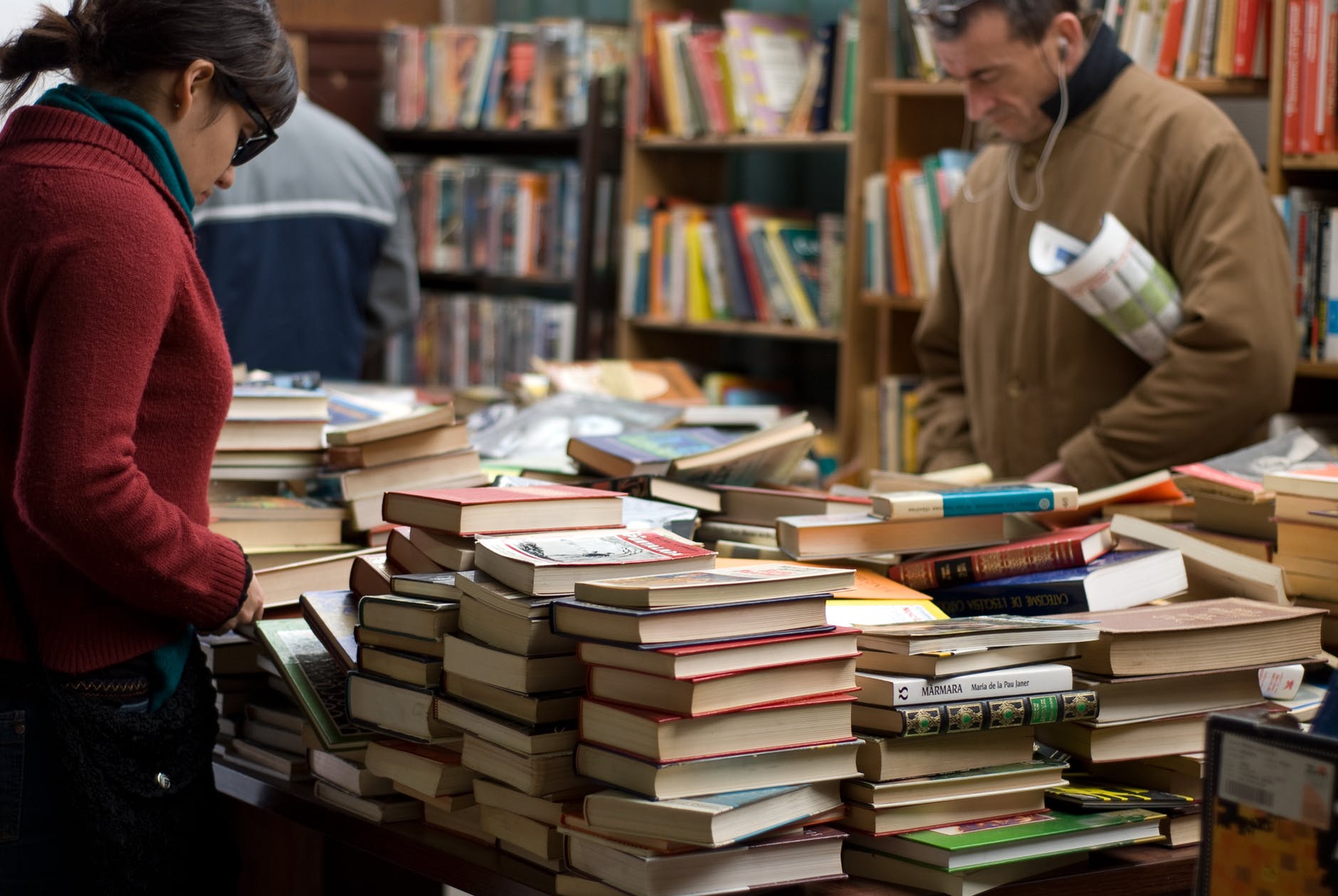
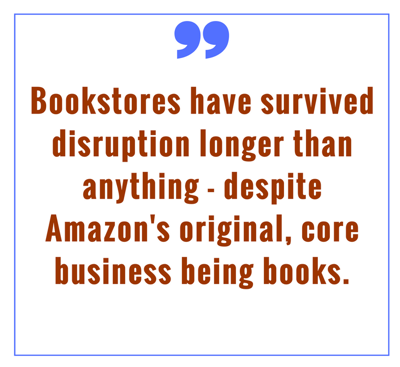
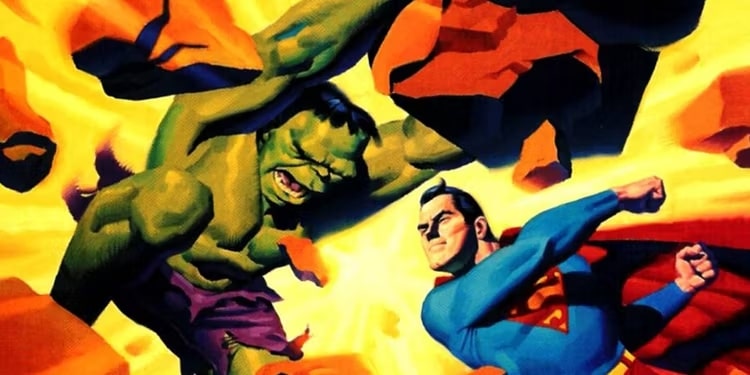

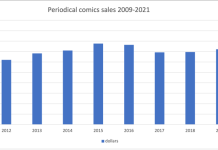



If I want physicals of music, it’s hard to go anywhere but Amazon type online store. I have basically no store options in my town (a Best Buy and a Target with awful choices). Bandcamp helps some, but even there physicals are rare. The future for most media is online (both to buy and read/hear/watch), which might have environmental benefits, but does reduce my enjoyment factor. Heck, the future of teaching, my profession, is probably online, too. It’s only a matter of time until I’m made redundant by someone’s prerecorded lessons and algorithm-based assignments. Sigh.
P.S. For books we only have a Books-a-Million. At least we have a comic book store, but once the owner retires, I bet that will be it. Every comic other store that’s tried to make it in this town has failed.
The last time I went into a B&N, about 30% of the sales floor was empty space devoted to selling their eBook reader. The genre sections (mystery, sci-fi, etc.) were shoved into cramped aisles to make room, and any new books were mixed in (unmarked!) with the regular shelves.
As far as I am concerned, if that’s the model they are trying to preserve, B&N _should_ fail.
For decades we had small bookstores. Music is gone, movies will soon be gone. They don’t need those gigantic stores. B&Ns inventory of books was never as good as Borders. They should have small stores and sell only bestsellers and proven evergreens.
I ENJOY READING OUT OF A REAL HARD COPY.
PLEASE DONT TAKE AWAY MY COMFORT ZONE.
MY QUIT TIME. MY ME TIME. I NEED THAT.
THANK YOU. I LOVE BARNS AND NOBLE.
There is honestly nothing that compares to holding the comic/newspaper/magazine/book in your hands and reading the printed pages. Call me an old fuddy-duddy, but I have exactly zero interest in reading one of the items I’ve listed above on a computer/tablet/phone.
In the end bookstores may be like comic book stores, small but loyal customer base of local residents.
It is possible for indie bookstores to exist and be profitable. The Portland Maine region has four hundred thousand people living within no more than a hours drive of it and it has at least four bookstores selling a wide range of new books. There’s also at least four comic shops in this region and a chain of successful CD/DVD/VINYL shops as well. Some of these make well over several million dollars a year so I’d call them small.
It is worth noting that Family Video seems to be doing fine with over 730 stores multiple years after Blockbuster tanked, Netflix exploded, & everyone declared the video rental store model dead. Now they’re offering pizza delivery as well. Clever & nimble can still win the day no matter what the headlines declare.
“They should have small stores and sell only bestsellers and proven evergreens.”
They used to under the B. Dalton’s brand. There is a reason they’re not around anymore. Waldenbooks also seemed to decline faster than Borders. It’s seems pretty clear that the model you describe doesn’t work outside of certain specialized environments such as airports.
“Bookstores may still go down, but they lasted longer than anything. I’ll leave the whys to other pundits to discuss.”
I think Barnes & Noble has lasted precisely because everyone has been predicting their doom for so long. With all the press coverage of Amazon and Borders going under and everyone predicting their days are numbered it’s been impossible for anybody tp come in and get suckers to loan them tons of money to take over and pull accounting games until the bills come due and they liquidate and move on to the next victim. Having worked in the retail industry and followed the news, most of the big specialty chains have been the victim of corporate financing shenanigans that get blamed on “disruption”. Toys R Us would be just fine without all the unnecessary borrowing for instance.
Sure, Amazon’s disruption of the book market has a lot to do with Barnes & Noble’s current woes, but a lot of it is also self-inflicted. They panicked.
It took over ten years for Barnes & Noble to price match their own web site in stores. Before, they charged in-store customers more than online customers.
Like it or not, books are moving digital. More than 50% of fiction books are bought digitally now, many of which never see a print release. This has allowed many authors to publish their books outside of the big five publishers. You would think that Barnes & Noble would embrace it. Nope. Instead, they entered the eBook market reluctantly in 2009 with the Nook, and never fully embraced it the way Amazon and Google have. They never gave the Nook the proper resources it needed and began outsourcing it. Now, many fiction authors are publishing their books exclusively on Amazon as a result. Many romance and science-fiction books can only be found as eBooks on Amazon.
It also doesn’t help that Barnes & Noble’s web site has become more atrocious over the years and makes it difficult to find what you’re looking for.
What Bill K says is really important. As Gang of Four sang, “Capital, it fails us now.”
We have a Books-a-Million and a B & N, and that’s it for new books (and CDs and DVDs). My favorite store, Hastings, closed in the fall of 2016.
The B&N near my house is pretty-well laid out. They’ve got loads of heavily discounted junk books in the front, followed by picture-encyclopedia style historical or reference books, plus popular hard-backs and paperbacks. And so on, until they get to a graphic novel section and a manga section. Plus a lot of other stuff, including art and business books.
The graphic novel section is not organized in a convenient way for me because it doesn’t separate out DC, Marvel, and everything else. They could probably generate more sales from me by doing that. But then, I’m looking for an adult, or at least, sophisticated story that says something relevant about the human condition.
Ultimately, though, if I’m going to spend money on a graphics-heavy product, I want the image resolution to be very high, and no one seems to be offering that in digital, probably because of the file sizes necessary to reach print quality. Also, I want to be able to preview the material, so that I’m not going to get stung by a cover that has a much higher production quality than the main material, and so that I have a sense that the writing is good.
If I’m going to buy something I want to see the first few pages, and I can only seem to do that in a physical bookstore. I can’t do it at Comixology, for instance.
From personal experience, I have to go with Bill K’s comment.
Financial bean counters (either honest or malignant) bringing in ‘specialists’ with no experience in the book trade will NEVER fix the problem. You have to really like books to understanding what makes someone go to a book store as opposed to buying online or digital. Just stocking bestsellers and evergreens will not do the trick. Books is a specialty trade, trust the specialists.
Comments are closed.